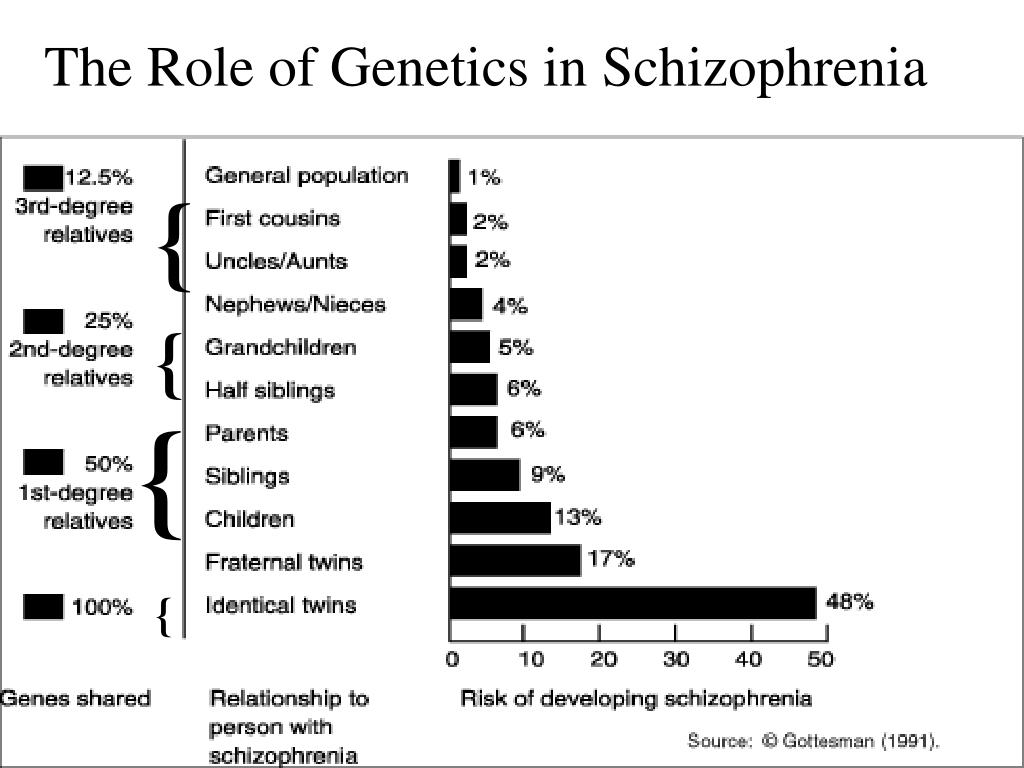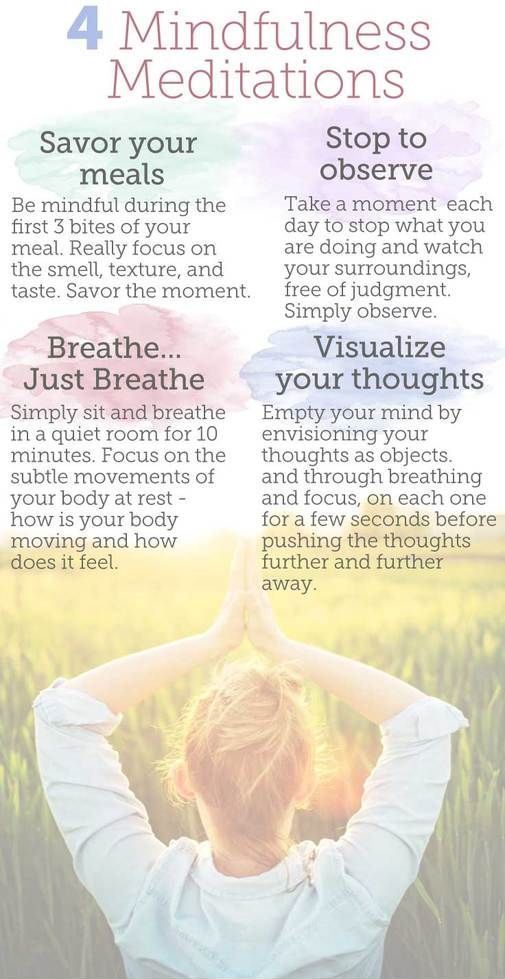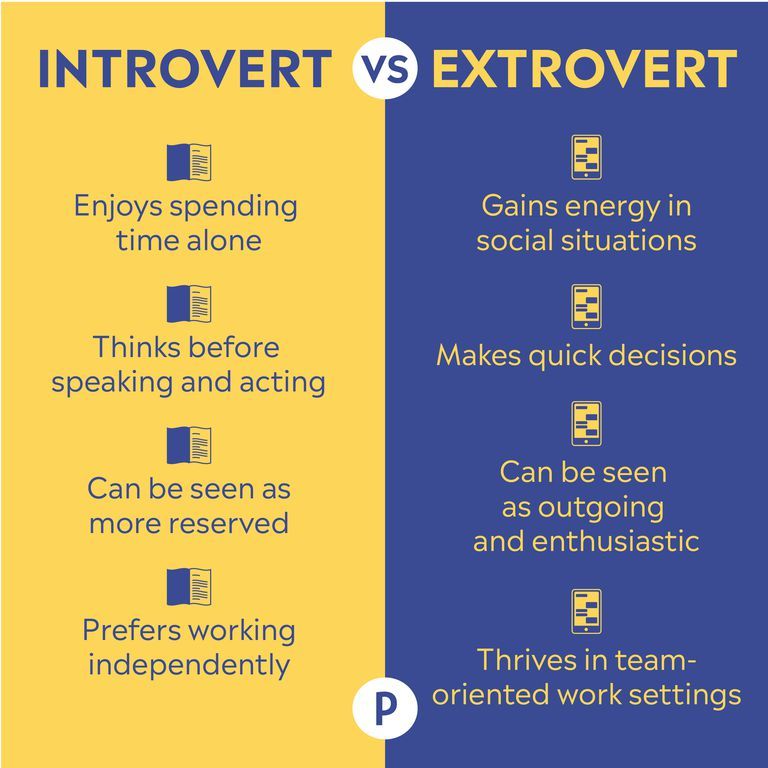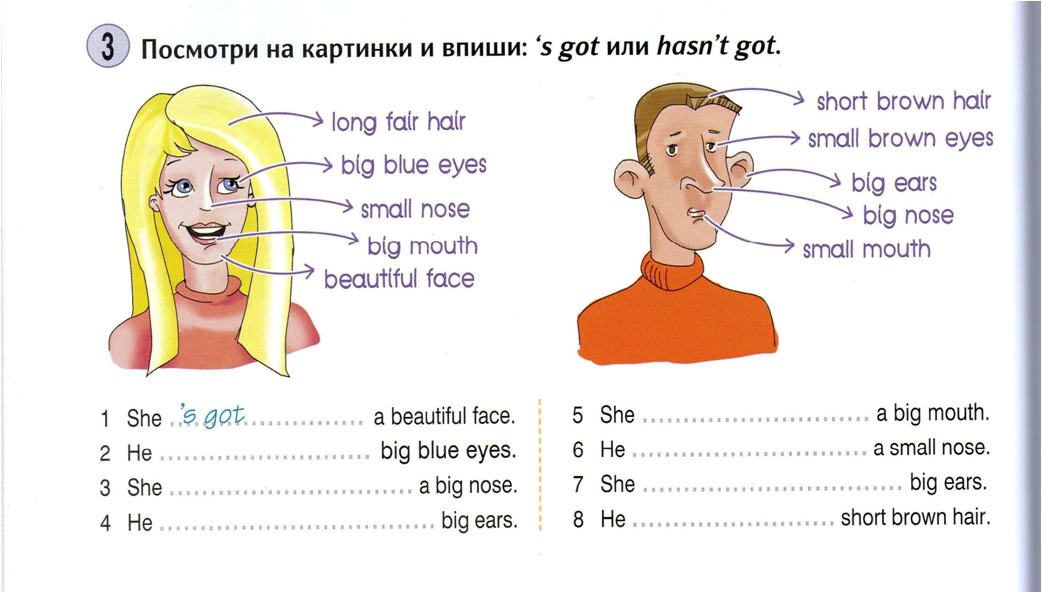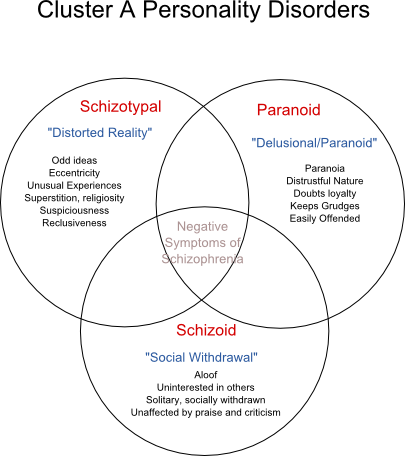Spousal abuse recovery
Building Your Case: How to Document Abuse
Search Close
Leave this site safely
You can quickly leave this website by clicking the “X” in the top right or by pressing the Escape key twice.
To browse this site safely, be sure to regularly clear your browser history.
Got it
Security Alert
Internet usage can be monitored and is impossible to erase completely. If you’re concerned your internet usage might be monitored, call us at 800.799.SAFE (7233). Learn more about digital security and remember to clear your browser history after visiting this website.
Click the red “X” in the upper-right corner or “Escape” button on your keyboard twice at any time to leave TheHotline.org immediately.
OK
If you are in an abusive relationship and are in the process of taking (or deciding to take) legal action against your abusive partner, documenting the abusive behaviors of your partner can be an important component of building your case.
It’s worth noting that each state has different laws about what evidence and documentation can be used in court. Speaking with a legal advocate in your state might better prepare you for your unique situation (our advocates at the Hotline can help locate a legal advocate near you). According to WomensLaw, in most states evidence can include (but is not limited to) the following:
- Verbal testimony from you or your witnesses
- Medical reports of injuries from the abuse
- Pictures (dated) of any injuries
- Police reports of when you or a witness called the police
- Household objects torn or broken by the abuser
- Pictures of your household in disarray after a violent episode
- Pictures of weapons used by the abuser against you
- A personal diary or calendar in which you documented the abuse as it happened
Below are a few actions you can take to create documentation, if you are able to or feel safe doing so:
- Visit the doctor.

-
More and more, doctors and gynecologists are trained to recognize signs of abuse. Your health care provider could also be a safe resource for disclosing the abuse. If you’re visiting a doctor for an injury, ask them about safe ways they can make notes about the abuse — ex. Some can write “cause of an injury” without it having to go to the police.
- Consider outside documentation.
-
Do you have a trusted friend, coworker or family member who knows what’s going on and would be willing to help? There are many ways they can help document the abuse — whether that’s a coworker making note of times your partner calls you at the office, or a friend holding your journal at her house.
- Create a stalking log.
-
If your partner is stalking you, creating a stalking log can be very helpful to your case.
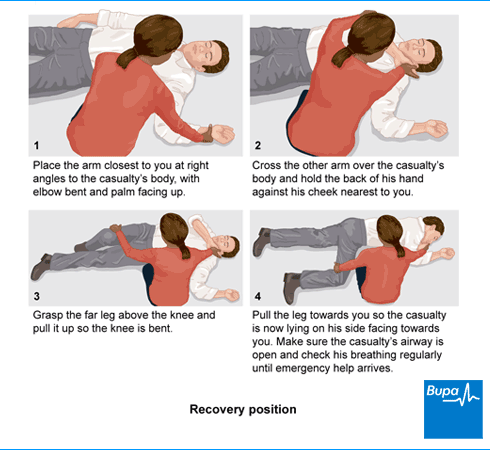 The National Center for Victims of Crime’s Stalking Resource Center has examples of stalking logs (in PDF and Word formats) as well as additional information on stalking.
The National Center for Victims of Crime’s Stalking Resource Center has examples of stalking logs (in PDF and Word formats) as well as additional information on stalking. - Learn more about police reports.
-
ex. Like filing about a lost bike. Ask, “Hypothetically, if there was something that was happening that I would want to report…”
Always ask questions. Call your local police department’s non-emergency number and find out about the protocols and procedures of filing a police report.
This can help you prepare for filing a police report if you need to, which creates a paper trail of the abuse.
- Take pictures.
-
A digital camera or your phone camera may not always be safe. Consider getting a disposable camera. Another option is for someone else to take the pictures and keep them for you.
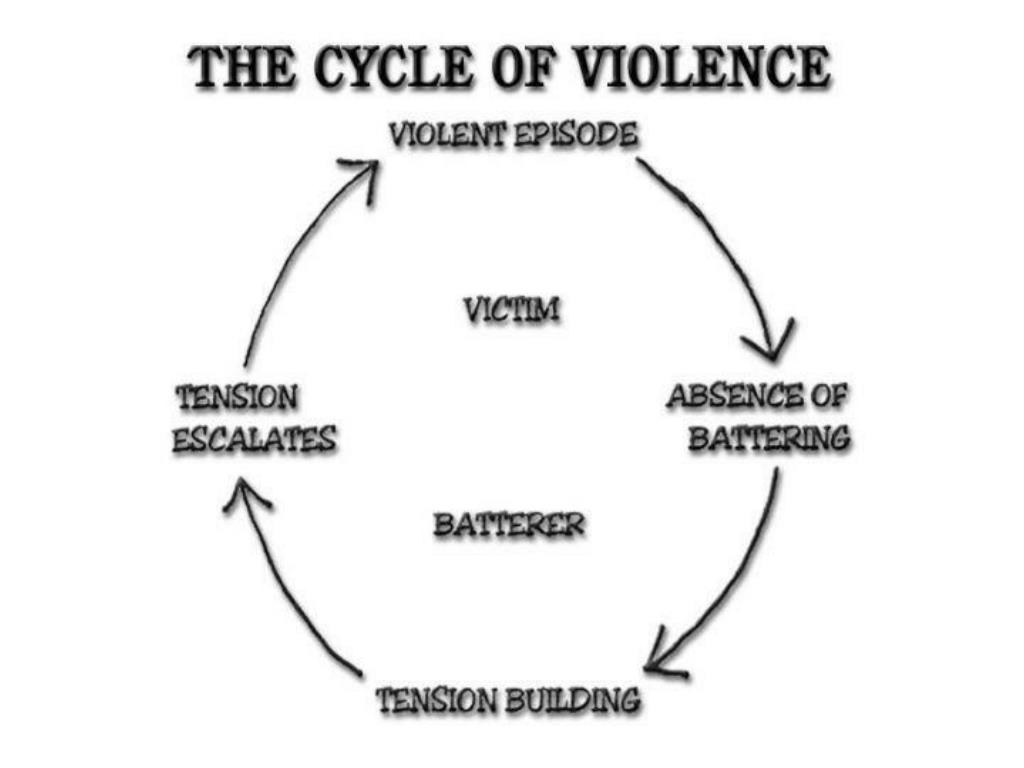
- Let it go to voicemail.
-
Is your partner calling over and over? Let it go to voicemail once and save the voicemail.
- Save digital evidence.
-
Do you have a smartphone? Most have the “take a screenshot” option. Thirty missed calls from your abusive partner? Take a screenshot of that. Threatening texts? Instead of responding to them, take a screenshot of them. These screen shots get saved in your images folder, so remember to send them on to a friend and delete them. If your partner sends threatening emails, don’t respond to them, but consider saving them in a folder in your inbox.
If you’re not sure if documenting your abuse would be safe, always go with your gut. It’s very important to keep in mind that you are the expert on your situation, and what works for one person may not be a safe idea for another person.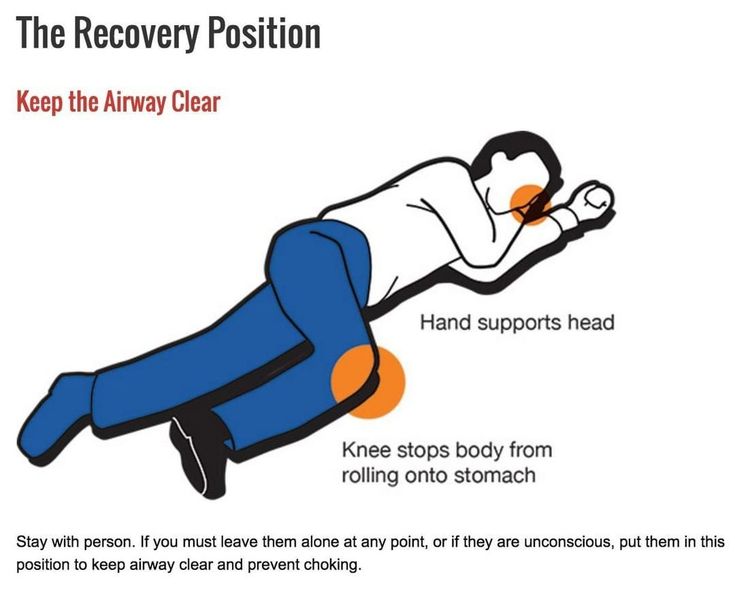
We are not legal advocates at the Hotline, but we are able to offer support and refer you to the local or state resources that might be helpful to you.
Answers shouldn’t be hard to find.
We're here to help!
- Call 1.800.799.SAFE (7233)
- Chat live now
- Text "START" to 88788
7 Steps of Healing from Domestic Violence
7 Steps of Healing from Domestic Violence- Conditions
- Featured
- Addictions
- Anxiety Disorder
- ADHD
- Bipolar Disorder
- Depression
- PTSD
- Schizophrenia
- Articles
- Adjustment Disorder
- Agoraphobia
- Borderline Personality Disorder
- Childhood ADHD
- Dissociative Identity Disorder
- Narcissistic Personality Disorder
- Narcolepsy
- Oppositional Defiant Disorder
- Panic Attack
- Postpartum Depression
- Schizoaffective Disorder
- Seasonal Affective Disorder
- Sex Addiction
- Specific Phobias
- Teenage Depression
- Trauma
- Featured
- Discover
- Wellness Topics
- Black Mental Health
- Grief
- Emotional Health
- Sex & Relationships
- Trauma
- Understanding Therapy
- Workplace Mental Health
- Original Series
- My Life with OCD
- Caregivers Chronicles
- Empathy at Work
- Sex, Love & All of the Above
- Parent Central
- Mindful Moment
- News & Events
- Mental Health News
- COVID-19
- Live Town Hall: Mental Health in Focus
- Podcasts
- Inside Mental Health
- Inside Schizophrenia
- Inside Bipolar
- Wellness Topics
- Quizzes
- Conditions
- ADHD Symptoms Quiz
- Anxiety Symptoms Quiz
- Autism Quiz: Family & Friends
- Autism Symptoms Quiz
- Bipolar Disorder Quiz
- Borderline Personality Test
- Childhood ADHD Quiz
- Depression Symptoms Quiz
- Eating Disorder Quiz
- Narcissim Symptoms Test
- OCD Symptoms Quiz
- Psychopathy Test
- PTSD Symptoms Quiz
- Schizophrenia Quiz
- Lifestyle
- Attachment Style Quiz
- Career Test
- Do I Need Therapy Quiz?
- Domestic Violence Screening Quiz
- Emotional Type Quiz
- Loneliness Quiz
- Parenting Style Quiz
- Personality Test
- Relationship Quiz
- Stress Test
- What's Your Sleep Like?
- Conditions
- Resources
- Treatment & Support
- Find Support
- Suicide Prevention
- Drugs & Medications
- Find a Therapist
- Treatment & Support
Medically reviewed by Scientific Advisory Board — By Christine Hammond, MS, LMHC on November 17, 2017
The first time Nancy came into counseling she had a hard time looking at her therapist.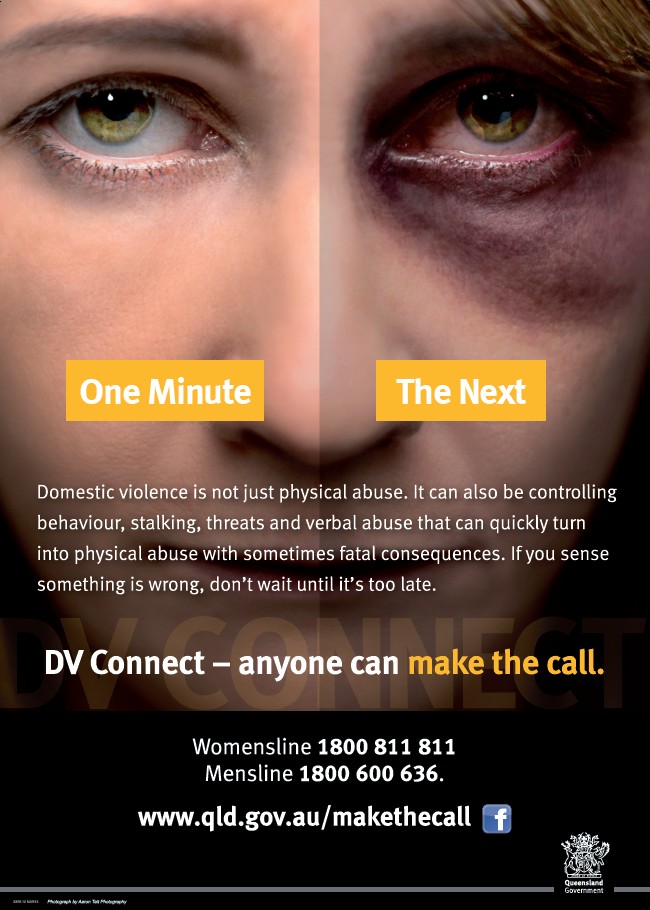 Embarrassed and ashamed of the bruises on her body, the mental torture from her spouse, and sexual acts he coerced her into doing, she struggled to talk. She believed that she deserved to be treated this way and her actions were causing his rage. Nancy minimized his acts by making excuses for his abusive behavior and blaming herself.
Embarrassed and ashamed of the bruises on her body, the mental torture from her spouse, and sexual acts he coerced her into doing, she struggled to talk. She believed that she deserved to be treated this way and her actions were causing his rage. Nancy minimized his acts by making excuses for his abusive behavior and blaming herself.
It took a while for Nancy to summon the courage leave her husband. Once she did, she thought that all of her problems would be over and she would be healed. However, what she thought was the finish of a race, was really just the beginning. It took her over a year to recover from her trauma and get to a place of feeling at peace. Heres how she did it.
- Safety first. The healing process begins when the victim of abuse is finally away from their abuser. Unfortunately this step can take months or even years of planning and preparation before it can become a reality. Safety means the victim is physically away from their attacker and can sleep without fear.
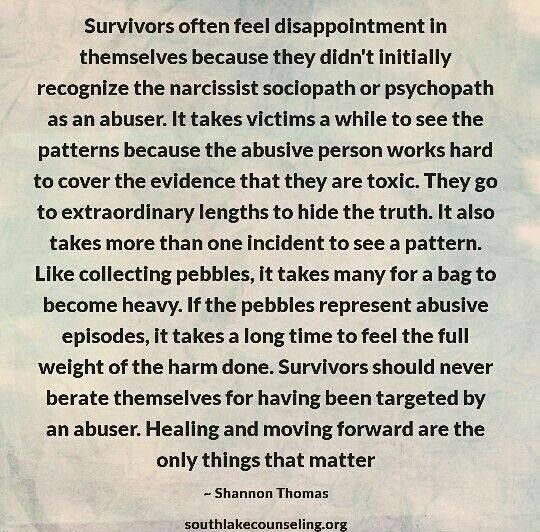 After Nancy left, she had a hard time believing she was safe and needed the reassurance of others literally saying, You are safe, over and over until it began to feel real.
After Nancy left, she had a hard time believing she was safe and needed the reassurance of others literally saying, You are safe, over and over until it began to feel real. - Stabilize environment. The temptation of therapists is to dive into the healing process after a victim is deemed safe. But doing this before the stabilization of a new environment can re-traumatize. Rather, the victim needs a period of rest to adjust to a new normal before the therapeutic work begins. The length of this necessary step is dictated solely by the victim and the amount of abuse endured. It took several months before Nancy felt like she could breathe again as the confused fog of abuse lifted.
- Support unconditionally. Between her therapist and two close friends, Nancy felt loved unconditionally even when she talked about how much she missed her abusive husband. It was as if Nancy was forgetting the trauma and only remembering the good times they shared. One of her family members became so frustrated with Nancys sadness that they yelled at her and pulled away.
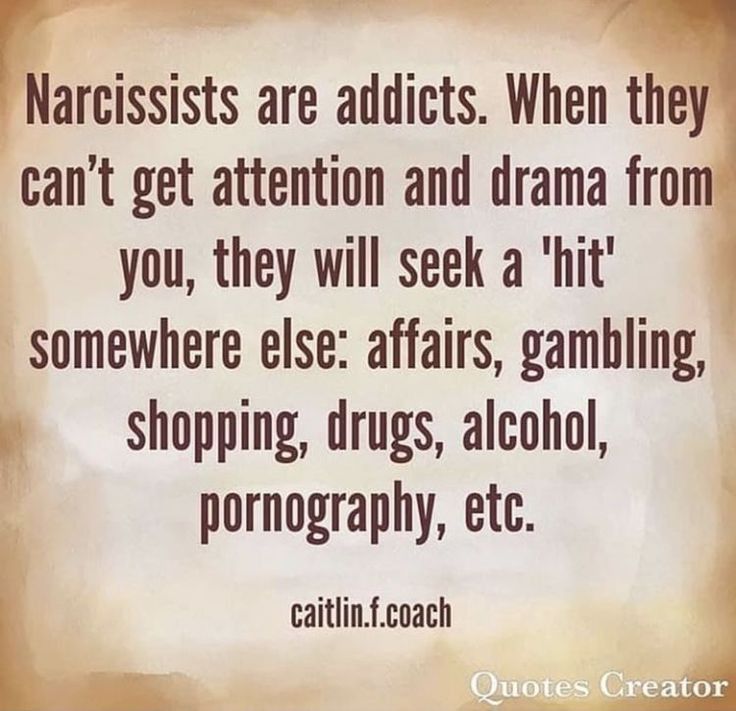 This was so painful for Nancy but the continued support of her two friends more than made up for the lack of family support.
This was so painful for Nancy but the continued support of her two friends more than made up for the lack of family support. - Share experiences. One of the most helpful steps to recovery from abuse is to find a support group with other victims of abuse. This shared common experience allows a person to realize that they are not alone in their abusive encounters. Abuse is very isolating, personal, degrading, humiliating, and shameful. Knowing that other intelligent, beautiful, talented, and kind people have been abused is both saddening and relieving. Nancys support group gave her additional people that she could lean on who understood from their own experience what she was going through.
- Settle incidents. This is often the most difficult step from an awareness perspective. As the obvious abuse is recounted, new obscure abuse comes to light. Most victims dont even realize the extent of their abuse until they reach this step. When they do, it can be overwhelming and will likely restart the grieving process all over again.
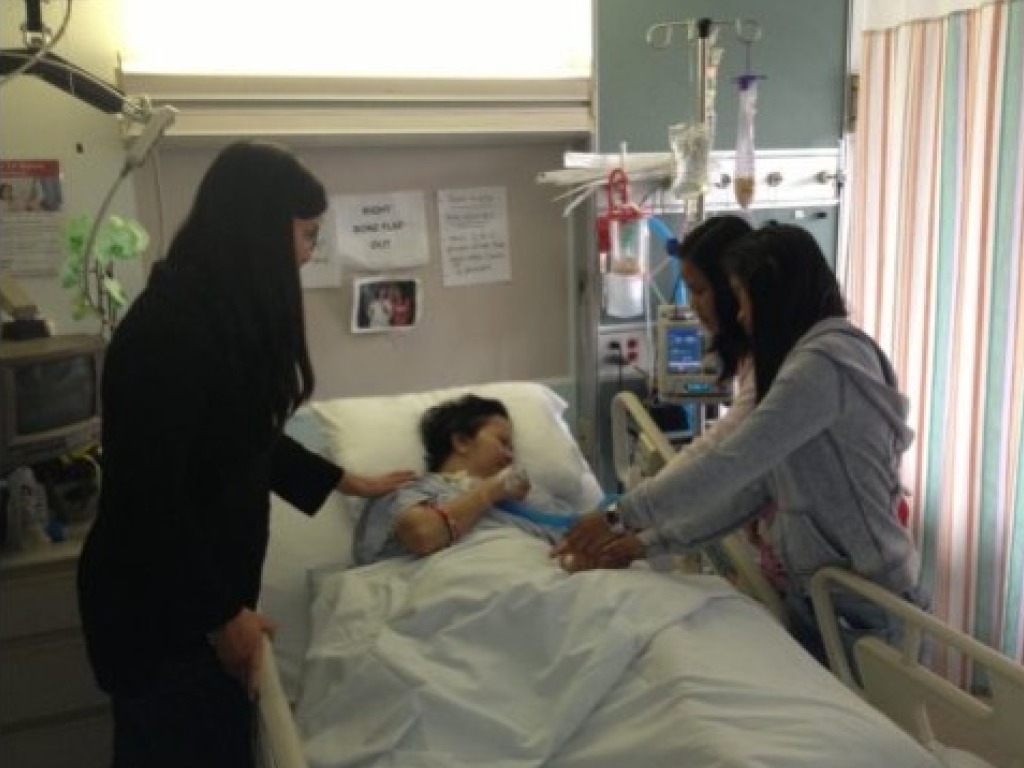 As Nancy examined each major traumatic incident, other types of abuse surfaced. She came to see that she was also mentally, verbally, emotionally, financially, spiritually, and sexually abused in addition to her physical abuse. Processing this information was hard at first, but it put a nail in the coffin of her abusive relationship for good. There was no turning back now for Nancy.
As Nancy examined each major traumatic incident, other types of abuse surfaced. She came to see that she was also mentally, verbally, emotionally, financially, spiritually, and sexually abused in addition to her physical abuse. Processing this information was hard at first, but it put a nail in the coffin of her abusive relationship for good. There was no turning back now for Nancy. - Stitch wounds. In order to stich the wounds of Nancys abuse, she needed to rewrite her internal dialog of what happened. In the past, she would minimize his contribution to an incident and take excessive responsibility for his behavior. When she stopped doing this and instead held him responsible for his actions, things changed. Nancy no longer believed that she was worthless or deserving of his abusive treatment. As time progressed, she began to take pride in her scars as evidence of her strength, determination, fortitude, and perseverance.
- Set standards. The final step towards Nancys healing was to set new standards for how she expected to be treated.
 These became the boundaries of what is acceptable behavior. Anytime a person would violate one of her limitations, she would confront them. If they demonstrated respect by their actions and not words, Nancy would remain in the relationship. If they did not, she ended things. These new standards helped to reduce her fear that she would reenter into another abusive relationship.
These became the boundaries of what is acceptable behavior. Anytime a person would violate one of her limitations, she would confront them. If they demonstrated respect by their actions and not words, Nancy would remain in the relationship. If they did not, she ended things. These new standards helped to reduce her fear that she would reenter into another abusive relationship.
It is important to note that abuse can happen to anyone in any relationship. While this article highlights Nancys experience of abuse from her husband, a man can also be the victim of abuse from his wife. Partner relationships, parent/child relationships, and friendships can be abusive as well. It is not the nature of the relationship or the sensitivity of the victim that determines abusiveness; rather it is the actions of the abuser.
Last medically reviewed on November 17, 2017
FEEDBACK:
Medically reviewed by Scientific Advisory Board — By Christine Hammond, MS, LMHC on November 17, 2017
Read this next
What Are the Signs of Domestic Violence?
Domestic violence can come in many forms and look different from situation to situation.
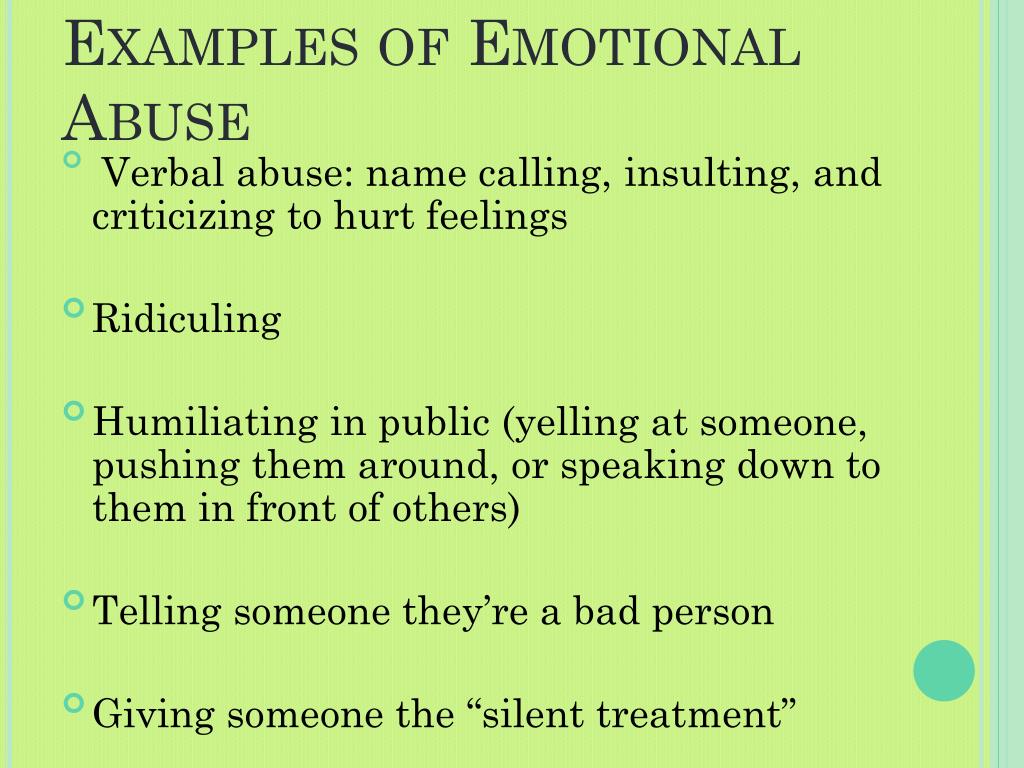 But there are common signs to look out for.
But there are common signs to look out for.READ MORE
What Causes Domestic Violence?
Medically reviewed by Jennifer Litner, LMFT, CST
Domestic abuse can take many forms and often begins subtly for those who experience it. Here's what we know about the causes of domestic violence.
READ MORE
The Physical & Emotional Injuries of Domestic Violence
All victims of domestic violence can be physically and emotionally injured. However, because of general streng
READ MORE
Five Types of Physical Abuse Narcissists Use on Spouses
Have your clients experienced a time when their narcissistic spouse lost control and became scary angry? Did t
READ MORE
Battered Woman Syndrome: Key Elements of a Diagnosis and Treatment Plan
Women who are victims of intimate-partner violence have been identified by the mental health field for more th
READ MORE
Prevention of psychological abuse in marital relationships
%PDF-1.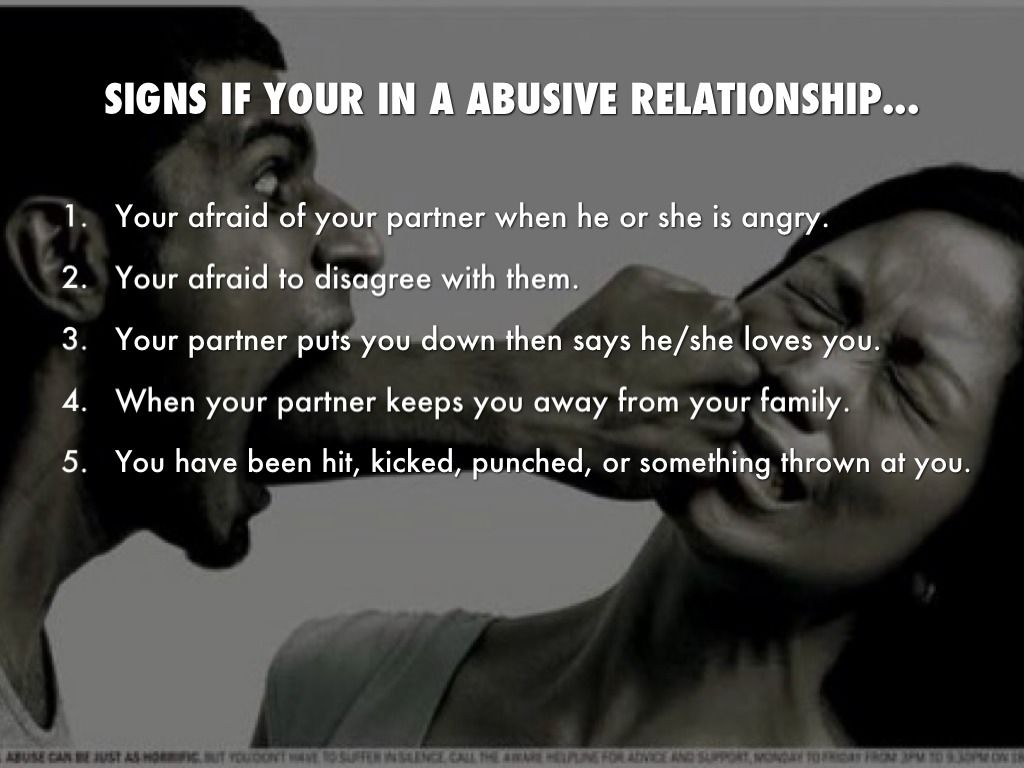 4 % 10 obj > endobj 6 0 obj /Title >> endobj 20 obj > endobj 3 0 obj > /Contents[263 0 R 264 0 R 265 0 R] /Annots [266 0R] >> endobj 40 obj > endobj 5 0 obj > stream
4 % 10 obj > endobj 6 0 obj /Title >> endobj 20 obj > endobj 3 0 obj > /Contents[263 0 R 264 0 R 265 0 R] /Annots [266 0R] >> endobj 40 obj > endobj 5 0 obj > stream
 m77gD#8fʤzMK実7nKL'iǜuJn?5O̵qnq{s5v0ّ4a͡1_Ľձښk& R&ad[R Ǧ2=vSegβFLeKQWYuSt wddnq5iY
m77gD#8fʤzMK実7nKL'iǜuJn?5O̵qnq{s5v0ّ4a͡1_Ľձښk& R&ad[R Ǧ2=vSegβFLeKQWYuSt wddnq5iY Every second person is a victim
‒ Andrey, how did your center appear? The direction of your activity - the rehabilitation of domestic rapists - is still a new practice for Russia, I have never heard of anyone doing this in our country. On the contrary, even the very existence of domestic violence is often denied.
‒ It’s better to be clear right away: we call our clients not rapists, but people who use violence, or authors of violence – this wording allows us not to identify ourselves with violence, gives a chance to look at our act from the outside and realize it.
The idea did not come to us suddenly, it was formed gradually. We have several people on the team. When I joined, working with violence was interesting to me both from a professional and personal point of view: I am very sensitive to issues of coercion, I largely understand the history of my growing up as a struggle against illegitimate power over oneself - in a variety of situations I had to defend my freedom will. I won’t say that there was something terrible there, the stories that we encounter in our work are much more terrible.
I won’t say that there was something terrible there, the stories that we encounter in our work are much more terrible.
For several years, colleagues came to us, first from European countries, to advise us on methodological issues. We got acquainted with the statistics, understood that such a practice would be relevant for our country, gradually began to work, and then we were also offered funding for these projects. So our organization appeared due to the fact that the urgency of the problem, professional interests and the willingness of people to invest in this matter came together. It is worth noting the special role of the St. Petersburg “Crisis Center for Women” - colleagues did a lot for the development of our organization, as they understood that it was not enough to work only with victims, it was necessary to work out problems with all participants in the situation of violence.
- You mentioned statistics. What numbers are we talking about?
‒ In 2010, the Committee on Social Policy of St. Petersburg cited research data, according to which 44% of St. Petersburg residents have experienced domestic violence in one form or another. That is, half of our society knows what it is about, knows what domestic violence is. This is a big problem, and it significantly affects the way society as a whole lives. For me, these figures have become one of the arguments in favor of the relevance of our work.
Petersburg cited research data, according to which 44% of St. Petersburg residents have experienced domestic violence in one form or another. That is, half of our society knows what it is about, knows what domestic violence is. This is a big problem, and it significantly affects the way society as a whole lives. For me, these figures have become one of the arguments in favor of the relevance of our work.
‒ Are there statistics on the success rates of similar programs abroad?
‒ First we worked with the Norwegians, then with the Swedes, now we are a member of the European Association of Professionals Working with Subjects of Violence. Why was the Scandinavian experience taken as a basis? Because colleagues show fairly good results, 80% of their clients do not return to the practice of domestic violence (according to a five-year follow-up after the end of psychological work). That is 80% without recurrence. This is achieved, among other things, thanks to a rather long work with the client. True, Scandinavia has built a system of motivation for passing such programs - it is difficult to hush up family violence there, there is strong public pressure on the authors of the violence.
True, Scandinavia has built a system of motivation for passing such programs - it is difficult to hush up family violence there, there is strong public pressure on the authors of the violence.
A question of self-discipline
– What is the essence of this technique?
‒ Everyone is responsible for their actions. We do not hypnotize clients, we do not put them into a trance. We are talking about the fact that you can control your actions. And a person, if he is sincere, admits that the act of violence was a conscious choice - not in the sense that a person sat and thought about how he would beat his wife (although this happens), but that there is always an opportunity to stop, even if you tend to think afterwards that you couldn't control yourself. We bring a person to a masculine position: I did it, I can manage it and I can change the situation if I see fit. When people see for themselves a different opportunity for behavior, they can change a lot in their lives. And of course, in the life of his family. Now remember those 44% - this is the number of victims of violence. But it means that there were also authors, and if each of these authors changes, then society itself will change.
And of course, in the life of his family. Now remember those 44% - this is the number of victims of violence. But it means that there were also authors, and if each of these authors changes, then society itself will change.
‒ How do authors of violence get to you? Wives bring?
‒ Not really. There are two types of violence - affective and instrumental. With an affective person, it seems that he is not aware of his actions, although this, as I said above, is not entirely true. And the instrumental is just full awareness and sometimes even planned actions, these are very difficult cases. Most of our clients are those who commit violence in passion. In a calm state, none of them said that yes, he wants to continue in the same spirit. On the contrary, they say: “I’m carried, they provoke me, I can’t restrain myself, how to stop ?!” Why do such people come? If you are afraid of losing something important to yourself. Our clients are those for whom the value of relationships is quite high - they are afraid of being left without relationships, without a family, without children, when guardianship authorities begin to control the situation or a woman is not ready to communicate with a person who behaves this way. Feeling the threat of loss, they come to us. True, often without fully realizing their behavior, but on the contrary, asking "to explain to her that everything is fine." Sometimes we are talking about the reputational losses that a person bears. In our practice, there is a case of an appeal after a decision was made by a foreign judicial system - they urged a Russian citizen living abroad to go through the program. This he himself needed to be considered in the host country.
Feeling the threat of loss, they come to us. True, often without fully realizing their behavior, but on the contrary, asking "to explain to her that everything is fine." Sometimes we are talking about the reputational losses that a person bears. In our practice, there is a case of an appeal after a decision was made by a foreign judicial system - they urged a Russian citizen living abroad to go through the program. This he himself needed to be considered in the host country.
But women also call with the question: “What should I do to get my husband to contact you?” In such situations, we advise you to first consider whether it is safe for her to raise such a question. Unfortunately, such attempts often end in another batch of beatings. Here it is more important to ensure a sufficient distance between yourself and the offender, to protect yourself and your children.
But there are also those who feel more confident and understand that things have not yet gone that far. In this case, yes, a woman can encourage a man to come to us.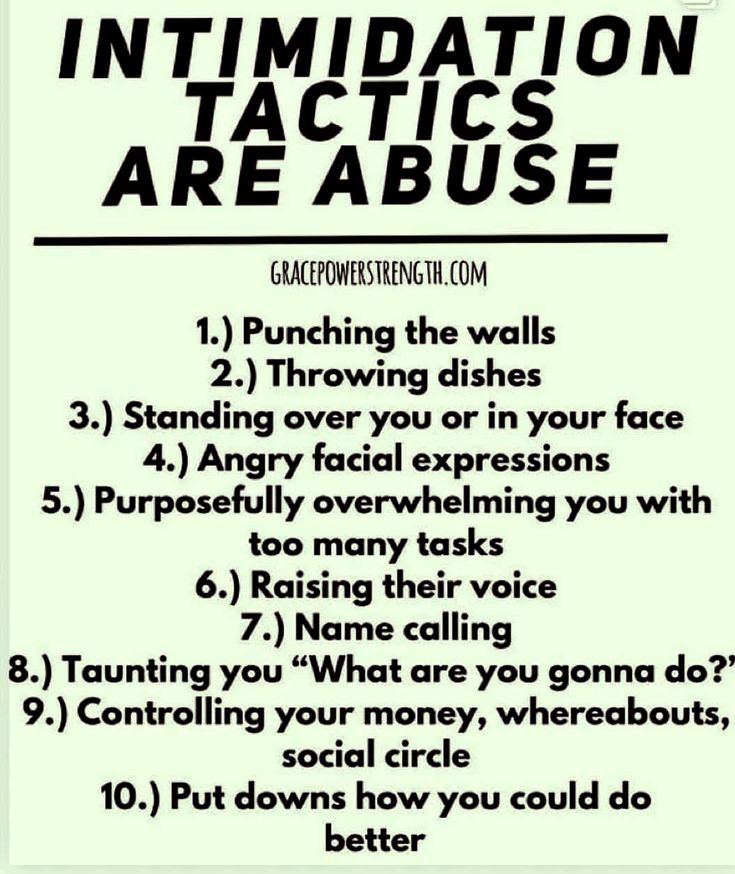
- You said that most of the acts of violence occur in the heat of passion. In everyday consciousness, affect is associated with complete unconsciousness of actions. And if so, how to explain your words that the choice of violence by your clients is a voluntary choice?
- This is a matter of self-discipline or, conversely, indulging your passions and weaknesses. If I am used to giving in to my weaknesses, I will certainly be carried away. But there is always an opportunity to evaluate what is happening, especially if you are being helped. We apply methodologically simple techniques - we restore situations of violence, we live them anew, but with full contact with reality, with a full sense of the moment. We propose to evaluate the impact force on a ten-point scale. Or, if it was not a blow, but a scream, then evaluate its volume. And it has never happened that people gave the maximum rating. Give five or six points. Or we ask you to rate your level of anger, again on a scale from 0 to 10. Here and up to 9-10 comes. Violence develops gradually, blows and beatings are preceded by throwing or destruction of objects. In our office, the client, with surprise for himself, describes the situation when there is a phone and a saucer on the table, and he grabs the saucer, and the smartphone continues to lie quietly. Here the client asks the question - why, if I did not control myself, I did not break the phone. A person understands that this is an expensive thing, and this is cheap, he understands what can be beaten and what cannot. You can also ask: “Would you act in the same way (i.e. using violence) not at home in the kitchen, but in a public place, in a shopping center or in a cafe? Not? So, we can assume that you are aware, understand what you are doing.
Here and up to 9-10 comes. Violence develops gradually, blows and beatings are preceded by throwing or destruction of objects. In our office, the client, with surprise for himself, describes the situation when there is a phone and a saucer on the table, and he grabs the saucer, and the smartphone continues to lie quietly. Here the client asks the question - why, if I did not control myself, I did not break the phone. A person understands that this is an expensive thing, and this is cheap, he understands what can be beaten and what cannot. You can also ask: “Would you act in the same way (i.e. using violence) not at home in the kitchen, but in a public place, in a shopping center or in a cafe? Not? So, we can assume that you are aware, understand what you are doing.
And so, gradually, with the aim of showing the real state of things, we lead them to accept responsibility for their actions. I think everyone can conduct such an experiment on themselves. There is no need to take any extreme situations, just observe your behavior in a stressful situation, evaluate what actions you perform, what decisions you make, and it turns out that it is possible - to master self-regulation.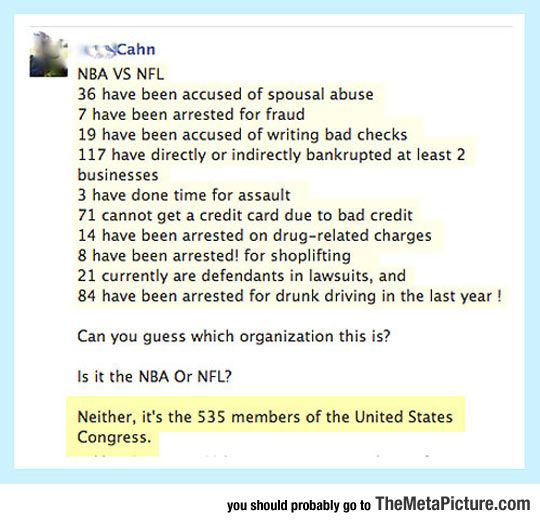 However, indulging your own passions, it is, of course, easier to wave your fist. Moreover, it seems to be a socially permitted model of a man's behavior - anger as a confirmation of masculinity. This also influences decision making.
However, indulging your own passions, it is, of course, easier to wave your fist. Moreover, it seems to be a socially permitted model of a man's behavior - anger as a confirmation of masculinity. This also influences decision making.
Sweets, bouquets, beatings
‒ There is an opinion in popular psychology about the irreversibility of the behavior of domestic abusers. They cite the following behavioral chain: first, verbal and psychological violence - then beatings - then a possible murder. What is your opinion about "irreversibility"?
- This is partly true. There is such a thing as cycles of violence. Schematically, it looks like this: an increase in tension, its release, a candy-bouquet period of atonement for sins, again tension, again a reset. Over time, the cycles become shorter and the violence more violent. This inertia, if there is no external interference in the system, can lead to murder. Either the woman, driven to despair herself, destroys the offender, or he eventually kills her.
‒ What does the author of violence see in him? What is the rationale behind his actions?
- Violence has positive reinforcement for the abuser. A person experiences a buzz from the very outburst of emotions, from the fact that he can afford unlimited actions, throw out energy, swing, assert himself. This emotion is so strong that it requires confirmation, repetition - like an addiction to psychoactive substances in drug addicts. Hence the repeating cycles. This craving is largely unconscious, of course. The author of the violence forgets the negative of the situation, but the feeling of high remains, demanding to be reproduced again and again.
‒ Did I understand correctly that it is difficult, almost impossible, to stop this without external intervention?
‒ I would be careful not to say for certain, because we are talking about people, not robots. This means that the dynamics of behavior is not always unambiguous.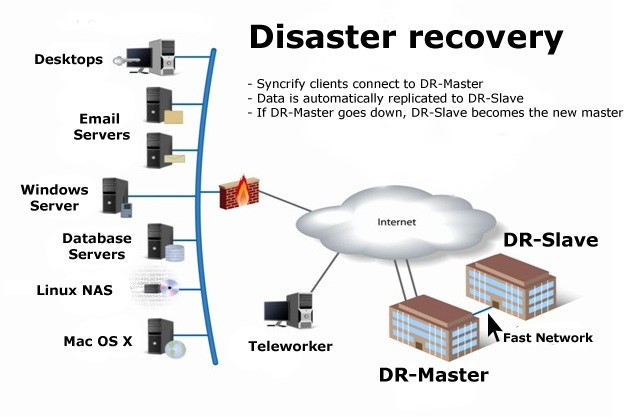 There are insights when a person himself is aware of everything and stops destructive actions. It would be more correct to say this: there is a scenario of increased violence, it is very likely, but exceptions are possible. There is another nuance here - violence can last for years, but the offender and even the victim may think that it's so normal, that everyone has it - they get used to it. The offender does not see this as a problem. He may believe that the family is doing well, that he is thus fulfilling his role as head. Often people refer to Domostroy. By the way, there is a fairly common descriptive approach in which it is believed that traditional society contributes to the existence of domestic violence. By the way, can our society be called traditional or not? Be that as it may, if we recall the above statistics, it turns out that we have 56% of people who have not experienced domestic violence. This means that models are possible when people live differently, probably take care of each other.
There are insights when a person himself is aware of everything and stops destructive actions. It would be more correct to say this: there is a scenario of increased violence, it is very likely, but exceptions are possible. There is another nuance here - violence can last for years, but the offender and even the victim may think that it's so normal, that everyone has it - they get used to it. The offender does not see this as a problem. He may believe that the family is doing well, that he is thus fulfilling his role as head. Often people refer to Domostroy. By the way, there is a fairly common descriptive approach in which it is believed that traditional society contributes to the existence of domestic violence. By the way, can our society be called traditional or not? Be that as it may, if we recall the above statistics, it turns out that we have 56% of people who have not experienced domestic violence. This means that models are possible when people live differently, probably take care of each other.
‒ You have already touched on some ontological foundations of being...
‒ Yes, probably. This is an eternal story of myths and legends, literature. Power is a great temptation in which it is difficult to maintain humanity. And it's not always a gender story. It happens that a wife is the author of violence against her husband, or adult children against elderly parents. And our colleagues from crisis centers for women observe the attitude of mothers towards small children - there, women who suffered at the hands of their husbands transmit violence further, to children. Violence is hierarchical, from the oldest to the youngest, from the strongest to the weakest.
Sometimes it is really difficult to understand what it is - psychology or archetypes, lost in the depths of the collective unconscious. Therefore, I repeat, I would not like to express myself in absolute categories. Rehabilitation and assistance to affected families should be conscious and careful - how many episodes when they interfere without tact, without understanding the situation, only exacerbating the situation. Our role is that we supplement the system of violence prevention, open a new sector. A man, or more accurately, a violent author, can calmly talk about his sins or wrongdoings. Talk without expecting blame or mentoring from a counselor. This is a rare opportunity, because friends or relatives, if they are not afraid to listen, will give advice, and it is not known in which direction. A good consultant, like a mirror, brings nothing of his own. We are only bringing to light what was forced out of consciousness by a person, and he must make the decision himself.
Our role is that we supplement the system of violence prevention, open a new sector. A man, or more accurately, a violent author, can calmly talk about his sins or wrongdoings. Talk without expecting blame or mentoring from a counselor. This is a rare opportunity, because friends or relatives, if they are not afraid to listen, will give advice, and it is not known in which direction. A good consultant, like a mirror, brings nothing of his own. We are only bringing to light what was forced out of consciousness by a person, and he must make the decision himself.
Dad, mom, me
‒ How can you track your performance?
‒ In our experience, if a person starts talking, then violence always subsides, at least physical. With the client, we discuss the opportunity to communicate with his partner. They usually agree. We ask the partner how the relationship has changed, whether there is violence left in them, how the partner feels and sees prospects. And if a crisis center for victims of violence also works with a partner and rehabilitation is carried out with children (because even if they are not victims, but simply witnesses of violence, this very seriously affects the child's psyche), then this is very good. In parallel, we have a healing effect on all participants in the situation of violence, then there is a greater chance to change the entire system. And when the violence is stopped and there are no relapses, you can move on to family therapy - there are other methods and other approaches that imply the presence of equal parties.
And if a crisis center for victims of violence also works with a partner and rehabilitation is carried out with children (because even if they are not victims, but simply witnesses of violence, this very seriously affects the child's psyche), then this is very good. In parallel, we have a healing effect on all participants in the situation of violence, then there is a greater chance to change the entire system. And when the violence is stopped and there are no relapses, you can move on to family therapy - there are other methods and other approaches that imply the presence of equal parties.
‒ Speaking of children. It has always amazed me that a child, a witness or a victim of violence, reproduces in adult life the same pattern of behavior that he himself suffered from. What's the matter?
‒ The fact is that for young children, parents are the whole world. Blaming parents means doubting the viability of this world, this is how the child's psyche works.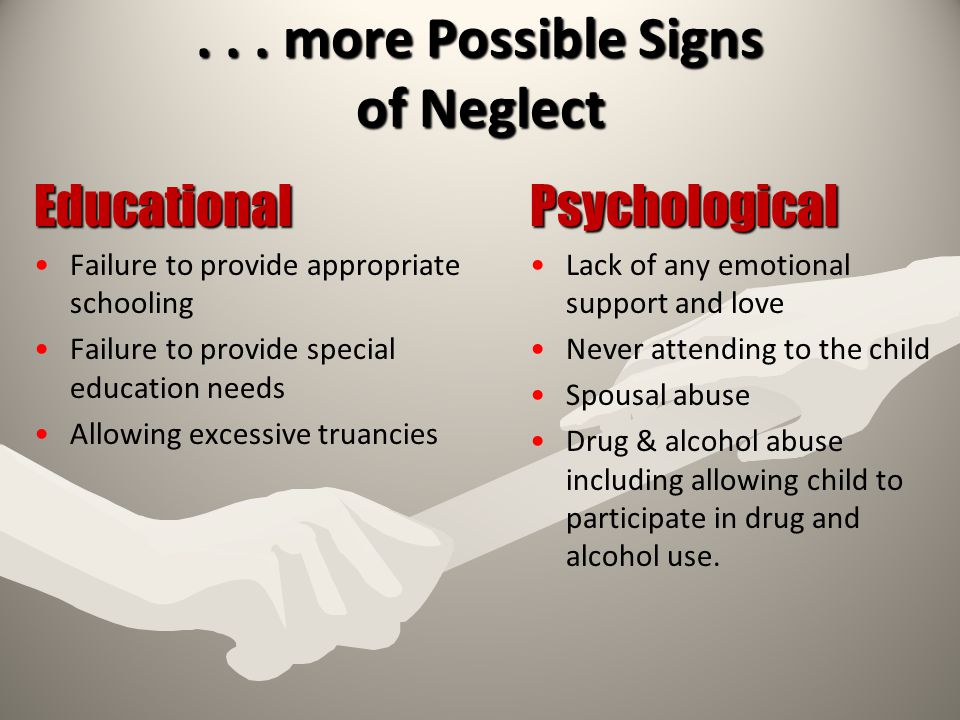 Therefore, they take the blame for the violence on themselves: “It’s my fault, dad or mom has nothing to do with it, I behave badly, that’s why something bad happens in the family. I have to make amends and everything will be fine.” It's such a defense mechanism. And then - since I think that the father or mother is not to blame, then I adopt their model of behavior for my future family life. If something in my behavior is wrong, then I begin to rationalize, explain logically my own actions - “I'm a man”, “I'm a husband”, “I'm a mother” and so on. I can, I have to.
Therefore, they take the blame for the violence on themselves: “It’s my fault, dad or mom has nothing to do with it, I behave badly, that’s why something bad happens in the family. I have to make amends and everything will be fine.” It's such a defense mechanism. And then - since I think that the father or mother is not to blame, then I adopt their model of behavior for my future family life. If something in my behavior is wrong, then I begin to rationalize, explain logically my own actions - “I'm a man”, “I'm a husband”, “I'm a mother” and so on. I can, I have to.
‒ How to distinguish between violence and conflict? Many families sort things out, but not in all cases, perhaps, we can talk about a situation of violence?
‒ Authors of violence are not some isolated crazy people, this is a much more common phenomenon, even mundane, and in everyone's life one can find an episode when a person became the author of violence. The criterion is in an attempt to suppress and subjugate the will of another person. In a conflict, each side pursues its own interests, defending them in one way or another. Balance is important here - neither side tries to win and subjugate the other. It happens that we are carried away, we go beyond the permissible, but we realize that we have crossed the line, and, guided by goodwill, we make concessions. Good will does not mean being ready to break into a cake for the sake of another, sacrificing oneself against one's own desire, it is just a willingness to take into account the interests of a partner, take into account his desires. It's like if you are walking down the corridor, and another person is meeting you, even if he is smaller and weaker than you, and you are ready to give way. Violence is the desire to destroy and enslave the opponent, to suppress him.
In a conflict, each side pursues its own interests, defending them in one way or another. Balance is important here - neither side tries to win and subjugate the other. It happens that we are carried away, we go beyond the permissible, but we realize that we have crossed the line, and, guided by goodwill, we make concessions. Good will does not mean being ready to break into a cake for the sake of another, sacrificing oneself against one's own desire, it is just a willingness to take into account the interests of a partner, take into account his desires. It's like if you are walking down the corridor, and another person is meeting you, even if he is smaller and weaker than you, and you are ready to give way. Violence is the desire to destroy and enslave the opponent, to suppress him.
Zero emotions
‒ I have come across the opinion that most authors of family violence are psychopaths, in a psychiatric sense. They have no empathy, sympathy, no remorse for their actions.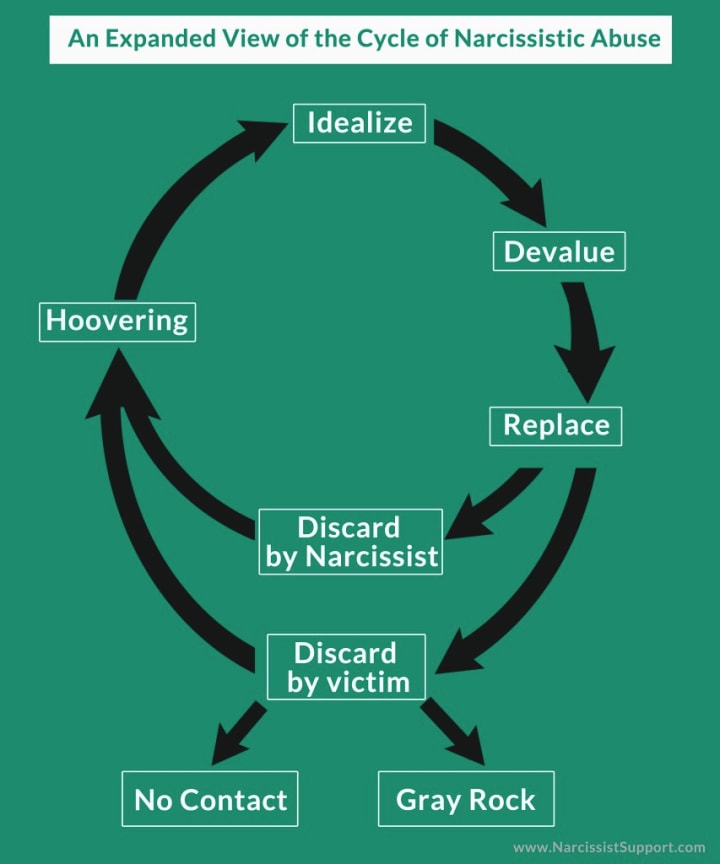
‒ Since I am not a doctor, but a psychologist with no medical education, I am not ready to discuss medical diagnoses. But then again, I repeat, violence, unfortunately, is much more common among people with a psychiatric norm. And, indeed, those prone to violence have reduced empathy, and hence the ability to sympathize. Often they are sincerely perplexed: why is everyone so worried?
‒ What is the reason for such emotional poverty?
‒ There must be a combination of reasons. For example, existing models of raising men simplify their emotional sphere. Feelings that are not "male" - tenderness, tears - are taboo. This is a general social norm, part of the culture. As a result, we can say that in men in a traditional society, the emotional sphere is in a certain sense underdeveloped. With clients, we re-master the palette of feelings. There was a man, we played different situations with him: I portrayed a feeling, and he guessed. Then vice versa. Over time, he began to understand feelings. And this is an ordinary person, although he has seen a lot in his life, including the war.
Over time, he began to understand feelings. And this is an ordinary person, although he has seen a lot in his life, including the war.
‒ Couldn't the war have made him close his emotions like that? What factors, besides social norms, influence the formation of the future author of violence?
‒ Personal stories, trauma, pain: the death of relatives and friends, for example. If by this moment the human psyche was already predisposed to closeness, he will not be able to fully enter into this pain, survive it in order to get out of the crisis emotionally alive and wiser, but will become more and more unyielding, rigid, closed in himself. A lot of energy is spent on keeping feelings under control. When a person is faced with current stress, these forces may not be enough - then feelings break out. So yes, personal history matters. But not everyone who was at war or in serious trials becomes the authors of violence. Some people are helped by principles and beliefs, some have consciously undergone rehabilitation themselves.
- You mentioned instrumental violence - when a person beats not in a state of passion, but calmly, with a full sense of his rightness. Can something be done about these? And is it necessary?
‒ Still, not completely calm, rather, we are talking about the predominance of calculation over feeling. But the latter is not cancelled. Here, external influence is much more significant than in working with "affectives". In such cases, destructive aggression can only be stopped by applying adequate sanctions. Crime is punishment. And then psychological work is possible, but it is more difficult, because the motivation for it comes from outside, and it is not known whether a person still has humanistic values that can stimulate him to search for an alternative to violence. The complexity of instrumental violence is that a person consciously created and designed the situation. Why should he change? Perhaps these people believe that their methods are effective.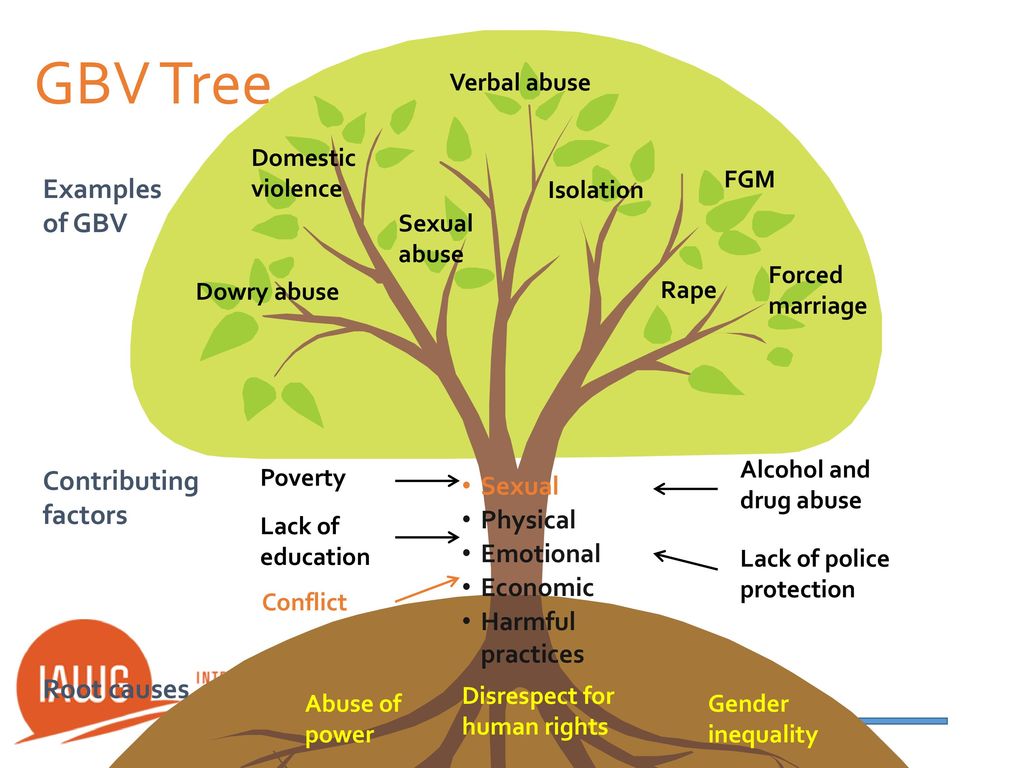 Then sometimes it is necessary to rely precisely on an analysis of effectiveness that is as rational as the actual violence itself.
Then sometimes it is necessary to rely precisely on an analysis of effectiveness that is as rational as the actual violence itself.
Fear Factor
‒ A year ago, a government commission on juvenile affairs proposed opening crisis centers in Russia for men who were once convicted of abusing their loved ones. The comments on this news, which I met on the net, were mostly negative: “the hunchbacked grave will be corrected”, “there is nothing to help the “freaks””, “it is better to increase assistance to the victims”. What can be said to justify this initiative?
‒ Such comments come from a lack of understanding of the situation. People think that we are talking about some isolated egregious cases of violence. Although this is a much more common phenomenon and it is closer to our everyday life than is commonly believed. But they do not think about it, and behind themselves they may not notice the violence. Programs like ours provide a chance to save relationships, family. Although this is not an end in itself. The main thing is to stop the violence. After working with a psychologist, a person can really understand a lot about himself, repent, and most importantly, change his behavior. After all, who are we not to forgive?
Although this is not an end in itself. The main thing is to stop the violence. After working with a psychologist, a person can really understand a lot about himself, repent, and most importantly, change his behavior. After all, who are we not to forgive?
‒ How to understand that your partner is a potential author of violence? What should alert in his behavior?
‒ Firstly, if you have experienced at least a one-time episode of violence, then the person is prone to it. If there are no obvious manifestations, then I would trust my inner feeling more. How do you feel with this person? Are you always safe and comfortable with him? You should not close your eyes to the fact that sometimes it is scary, uncomfortable with a person. Don't be fooled, be honest. If it seems to you that you are being "covered", communication with friends is stopped, your hobbies are being sacrificed, your lifestyle is changing - these are alarming symptoms. You can try discussing this with your partner.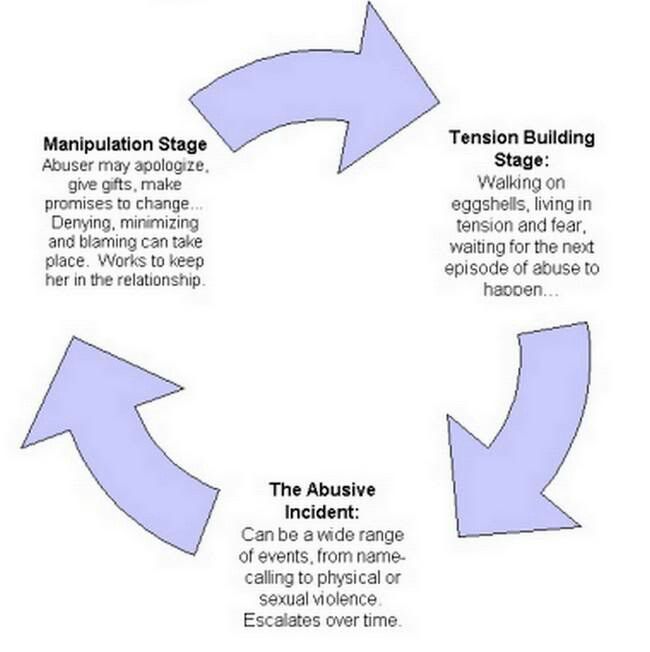 If a person is prone to violence, then he will dismiss the question, will not even talk about it. If he thought about it, if he does not want you to feel uncomfortable in his company, then all is not lost.
If a person is prone to violence, then he will dismiss the question, will not even talk about it. If he thought about it, if he does not want you to feel uncomfortable in his company, then all is not lost.
- The same question can be asked from the point of view of the author of violence. How can I understand that I am becoming one?
- For example, you suddenly come across the fact that you are afraid. But it is important to understand why this is happening. Maybe it’s just that I have a gangster appearance, but in my soul I’m kind-hearted - “terrible on the face, kind inside”? In this case, with the continuation of the acquaintance, the fear will pass. Or maybe I'm crossing someone's borders? My wife once noticed that I put a glass on the table with a bang, and she shudders. I didn’t even pay attention to it, but I had to develop a new skill. If people are afraid of something in your behavior, there is reason to think.
‒ What is the role of the victim in the behavior of the abuser, in other words, is there a “set of character traits” of the victim that makes it easier for the spouse to turn into a domestic abuser? Or will a person capable of such a thing prove himself anyway?
‒ To say that the behavior of the victim leads to violence is to justify the perpetrator.

